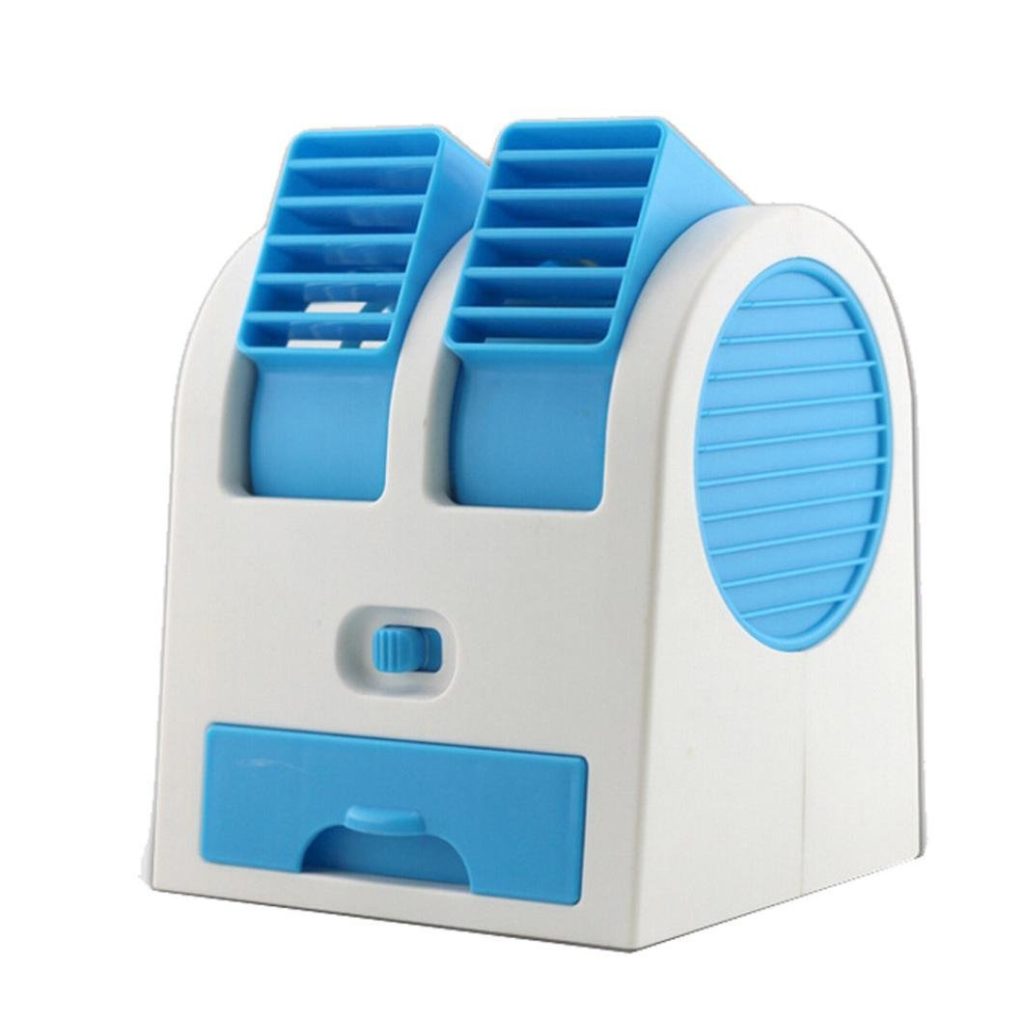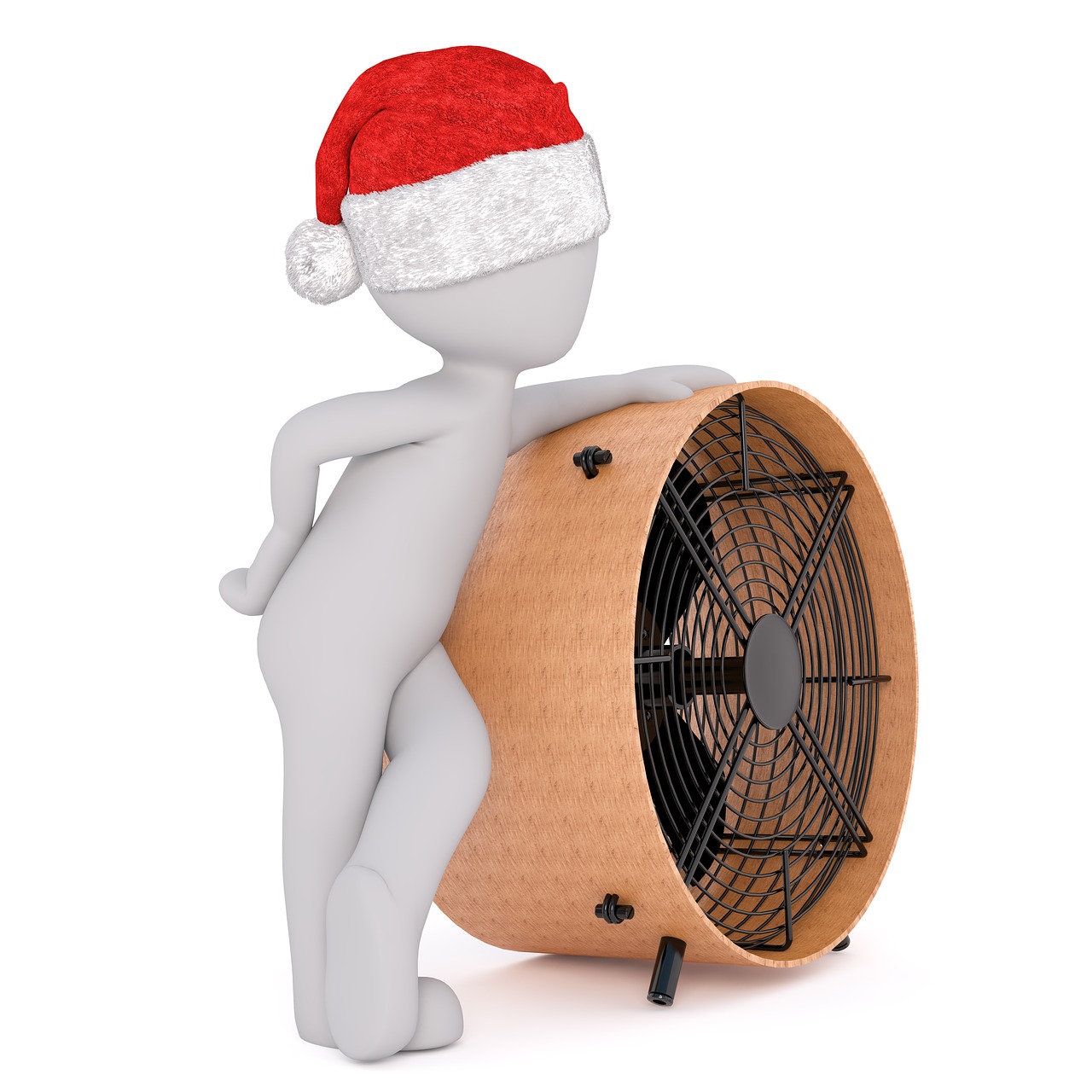The air cooler exploits the ability of water to produce cool air by evaporating, a physical phenomenon also referred to as “hydro-cooling” or “adiabatic cooling”.
The mechanism consists of a simple blower (fan) whose flow passes through a porous membrane kept permanently wet (filter). The water trapped in this filter evaporates under the effect of the air current while releasing cool air into the ambient air.
This well known physical reaction (latent heat), manifests its effects daily in our environment.
For example:
– after bathing, it is the heat that provokes this sensation of freshness on wet skin swept by the wind,
– it maintains the freshness of the water contained in a terracotta jars,
– it is also this same heat that contributes to the thermal regulation of our body by evaporation of perspiration…
In this completely natural way, the dry room air is sucked in at 35°C by the air cooler, which would have dropped by 10°C when it is blown into the room.
Please note: the increase in relative humidity in the room accentuates the feeling of coolness (temperature felt).
Advantages and disadvantages of the air cooler

Advantages
The air cooler offers many advantages:
– easy to use;
– basic mechanics (extremely rare breakdowns);
– no installation (no evacuation, only one plug to be connected);
– minimum maintenance (water tank hygiene);
– few consumables (10 to 15 liters of water per day);
– low energy consumption (< 100 W).
With no impact on the environment, it actively contributes to the healthiness of the premises by filtering the air it circulates.
Good to know: some models are equipped with an ionizer to purify the ambient air.
Disadvantages
The investment and operating costs of the air cooler are not comparable with those of air conditioning solutions (15 to 20 times less), but these units do not offer comparable performance. For example, it is not possible to program a set temperature.
The efficiency, which is maximum when the air in the room is dry, becomes mediocre when the humidity level rises. Like with a fan, the well-being is more evident in the air circulation area.
In contrast to air-conditioned rooms, it is advisable to activate room ventilation, for example by keeping a window open.
Selection criteria for air coolers
Air coolers are usually equipped with casters. This makes it easy to move them from room to room effortlessly.
The services you are looking for
All devices on the market combine several functions. It is therefore essential, first of all, to select the options that are useful:
– ventilation only;
– oscillation;
– tilting of the shutters;
– automatic humidifier;
– air purifier;
– ionizer;
– timer;
– remote control…
Room surface and volume
The evaporation capacity of the air cooler must be adapted to the volume of the room: in an oversized room, the increase in the ambient humidity rate quickly reduces the efficiency, undersized, the effect is close to that of a simple fan.
For the sake of simplification, the characteristics of most domestic appliances only mention the surface area of the room for which they are designed. This is due to the standardized ceiling height of our modern homes.
Note: for non-standard dwellings, the nominal volume allowed by each appliance (surface area x 2.5) must therefore be determined and compared to the room.
Water tank
Often related to the useful surface, the capacity of the water tank is a strategic element of choice. It is the tank capacity that dictates the frequency of tank refills, and therefore the autonomy of the appliance (10 to 12 hours seems to be an acceptable compromise).
Air flow rate
We have seen above, the influence of a blowing volume, compatible with the room, on the efficiency of the unit. Overbidding on the ventilation capacity can only be detrimental to the cooling performance of the unit.
On the other hand, it is useful to be able to adjust the speed of the blades. This allows the ventilation volume to be precisely dosed to adapt it to the size of the room (mobility) or to optional functions (ventilation only, natural ventilation, etc.).
Noise level
Many air coolers (especially in the entry-level segment) can generate noise that quickly becomes intolerable. For a better comfort, the lowest noise level (in dB) should be systematically sought.
Some manufacturing tips can be used to reduce the noise level: sleep program, alternating rhythms to simulate wind noise…
Price of the air cooler
For a 30m² (75 m³) mobile air cooler of standard quality, count between $100 and $300 including tax.
There are mini battery-operated units for less than $50 inc. VAT and, for camping, or RV activities, space-saving battery-operated systems starting at $800 inc. VAT.
